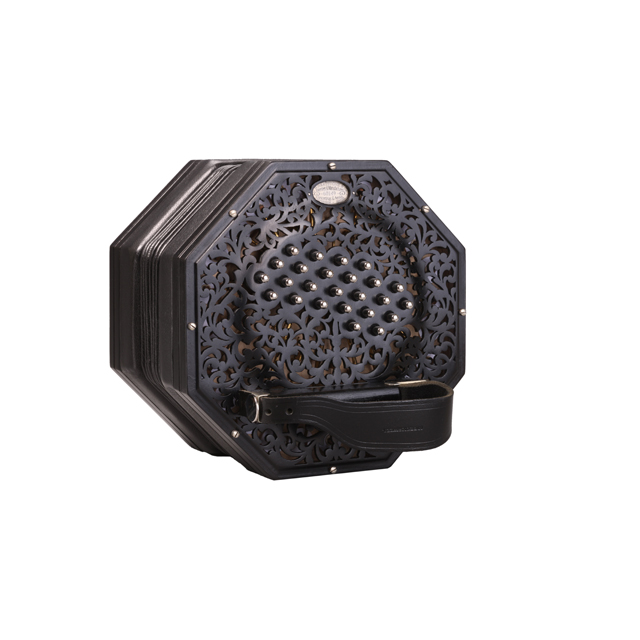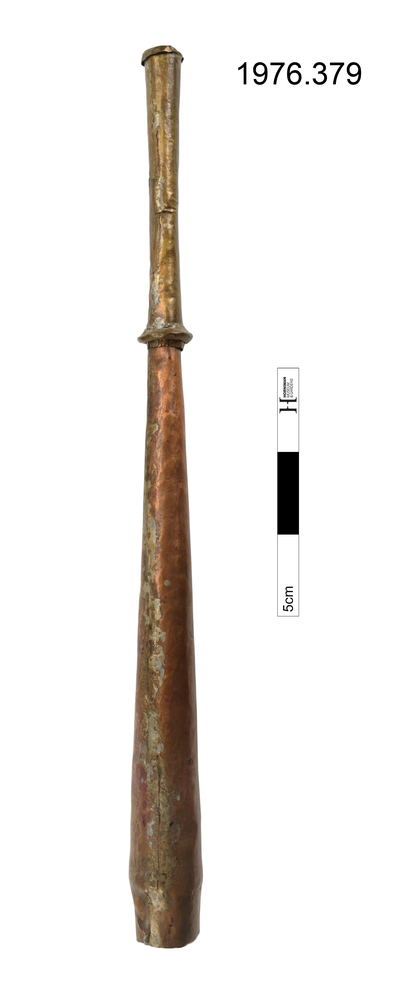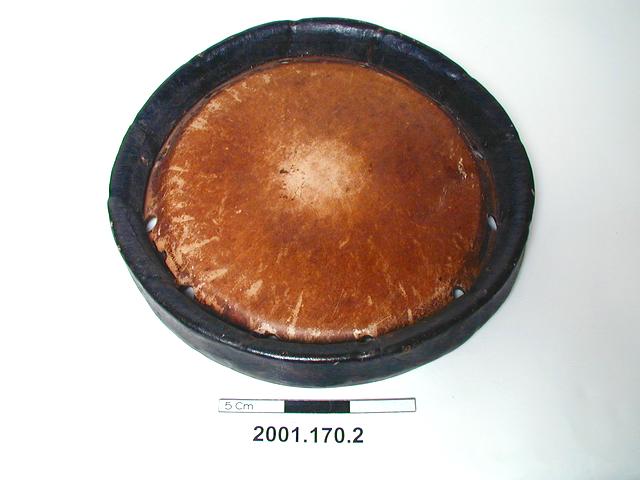
Hayden system duet concertina by Wheatstone & Co., Suffolk. An octagonal black concertina with silver buttons, fretted endplates and handle straps at each end. The maker notes that 'the sides and end plates are five-ply sycamore, with silver-plated fittings; button stems are tuned out of engineering-grade plastic (lactoid rod); plastic thumbplates; wood finish with high quality furniture wax; steel reeds - high carbon sprung steel 'musical steel' VPN no. circa 51-580; brass frames; goatskin covered leather bellows (bellows can be cleaned with a toothbrush and cherry-blossom shoe-shine).' This instrument has a concertina fingering system invented in the 1970's now favoured by professional players. The Hayden system concertina was built after the revival of the concertina in the 1970's, and it represents the upturn in the fortunes of the Wheatstone company, and a continued tradition of fine craftsmanship.
The Hayden system concertina was invented by Brian Hayden in 1967. The same system had been patented in 1896 in Switzerland by Kaspar Wicki. Hayden independently arrived at his duet system after radically altering a Jeffries duet concertina. The major advantage of Hayden's system is the uniformity of fingering between key signatures, allowing players to transpose music between keys with relative ease and making it particularly popular with professional players. This example was commissioned by the Horniman Museum from Steve Dickinson. It was made under the Wheatstone tradename, a legacy of Charles Wheatstone who invented the concertina and whose company produced them throughout that late 19th and early 20th centuries. Dickinson bought the name in the 1970s and continues to make Wheatstone concertinas in his workshop in Suffolk.







